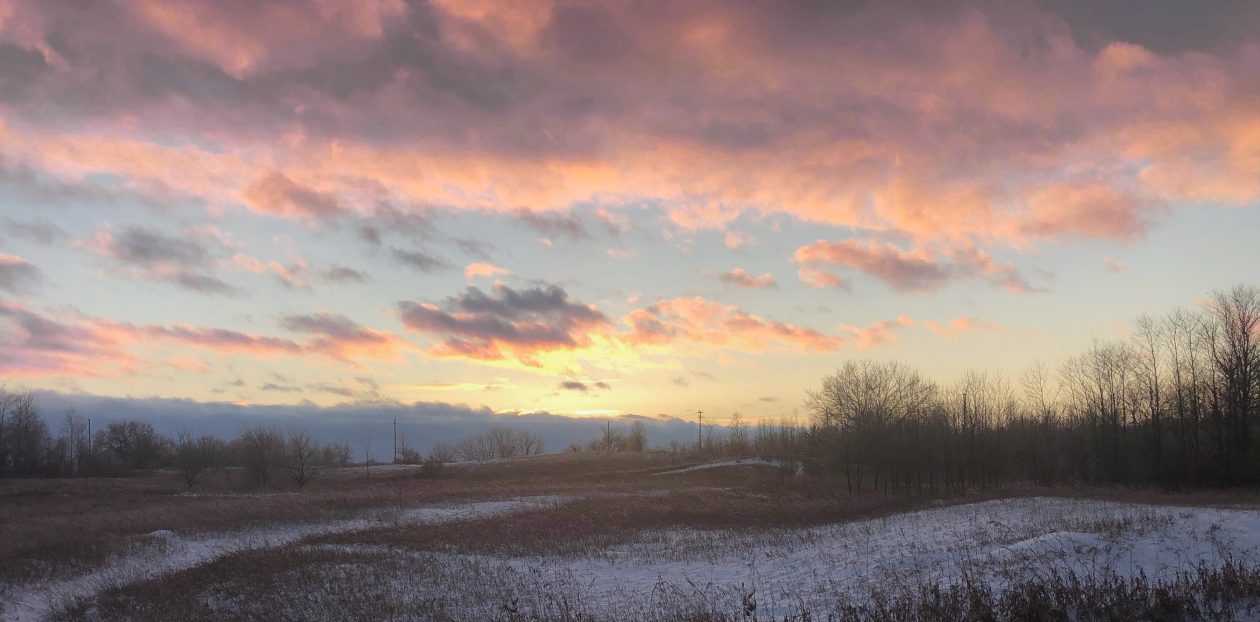There is a quality to the light and it’s effect on the forest that renders the result nothing short of beautiful.
Walking through the quietness, with no other sounds but the tweet of a chickadee or the rapping of a woodpecker, if you listen carefully you might hear the sleushing of water next to the sleeping river.
And you see how the afternoon shadows distort the body of Skye-dog…
She is on a diet, but she’s not *that* gigantic!
And I’m not that tall and skinny!
I often pass this majestic butternut tree, on this day basking in the sunshine. I have seen it for about twenty years now; it has been in slow decline due to ‘butternut canker’ (a fungus that enters through a wound and slowly kills the tree from the lower to upper canopy).
These Paper Birch trees will probably also succumb; their nemesis is the bronze birch borer. This is the reason why most nurseries have pulled back on selling these species of birch (Betula papyrifera and B. pendula) in favour of the supposedly borer-proof and native, River Birch (Betula nigra).
There are little surprises in the snow…
… and then there are big surprises.





























